April 17-22, 2016
EGU General Assembly, Vienna, Austria
Abstract
Climate change has strong implications for many essential ecosystem services, such as provision of drinking and irrigation water, soil erosion and flood control. Especially large impacts are expected in the Mediterranean, already characterised by frequent floods and droughts, and for which less rainfall and more extreme weather events are projected for the coming decades. Sustainable Land Management (SLM) strategies are increasingly promoted to reduce the risks associated with climate change on ecosystem services. However, there is surprisingly little known about their impacts and trade-offs on ecosystem services at regional scales. The aim of this research is to provide insight in the potential of SLM for climate change adaptation, focusing on regional-scale impacts on soil and water resources. We applied the processed-based spatially-distributed hydrological model SPHY (Spatial Processes in HYdrology) on a daily timescale to the semi-arid Segura River catchment (18,800 km2) in SE Spain. In addition, we coupled the MUSLE soil erosion equation to the hydrological model to simulate soil erosion and sediment transport. We run the model for three periods: one historic (1981-2000) and two future scenarios (2031-2050 and 2081-2100), with and without implementation of SLM strategies. Climate input data for the historic scenario was based on interpolated measured data and for the future scenarios on output from regional climate models for different emission scenarios (RCP4.5 and RCP8.5). Realistic scenarios of SLM practices were based on a previous stakeholder consultation process. Analysis of the regional climate models under the most extreme emission scenario showed an average decrease of yearly precipitation of 97 mm (28%) and an increase of average temperature of 4.8 ºC (29%). Preliminary model results, based on these scenarios, show a maximum 80% decrease in discharge under future climate conditions. Wide-scale implementation of SLM can effectively contribute to climate change adaptation by maintaining the soil water retention capacity and soil moisture content in the rootzone. Based on these findings we are currently estimating sustainability of soil and water resources and implications for crucial ecosystem services in the Segura catchment.
×


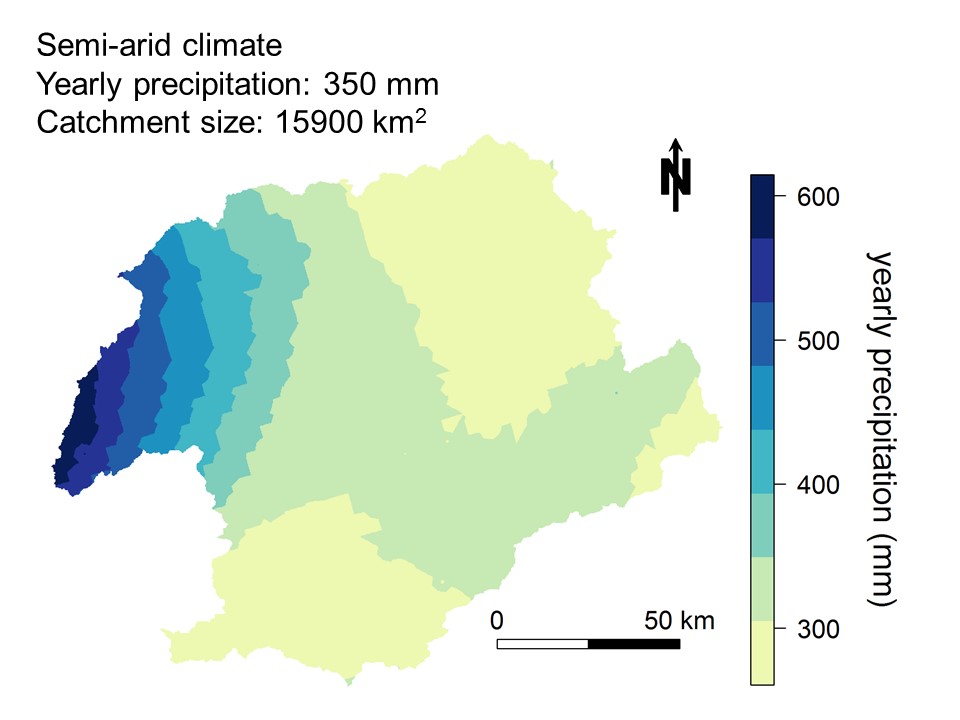
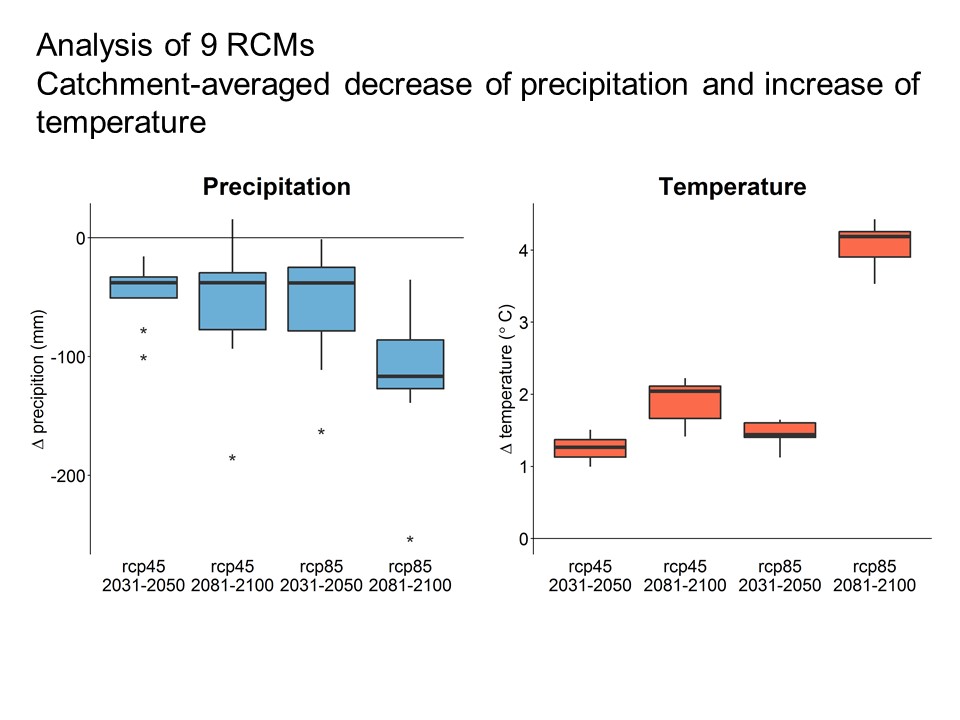
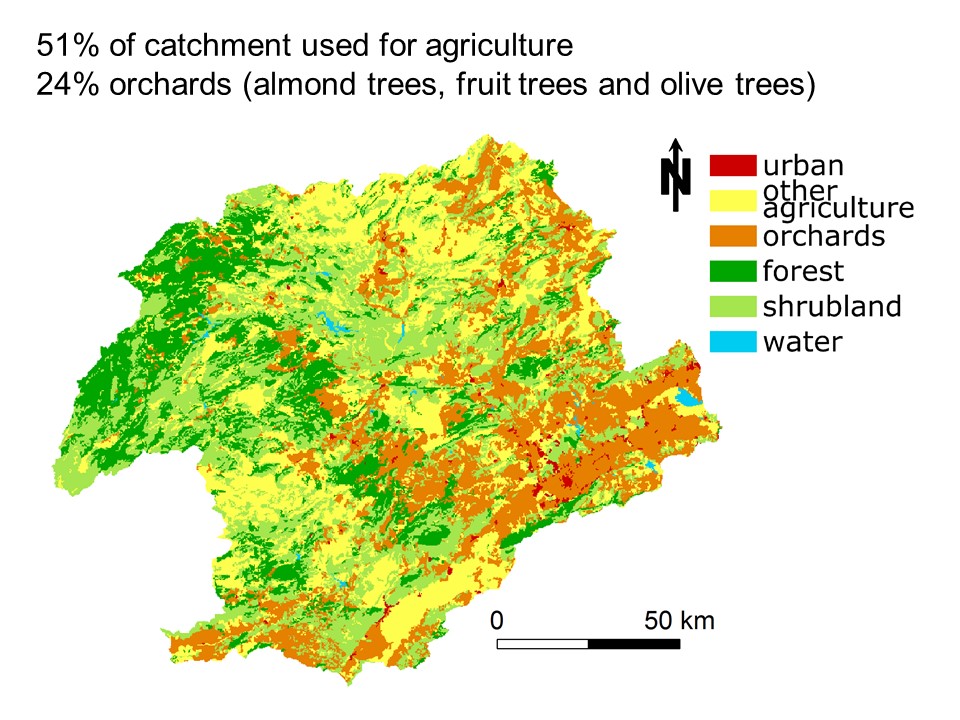
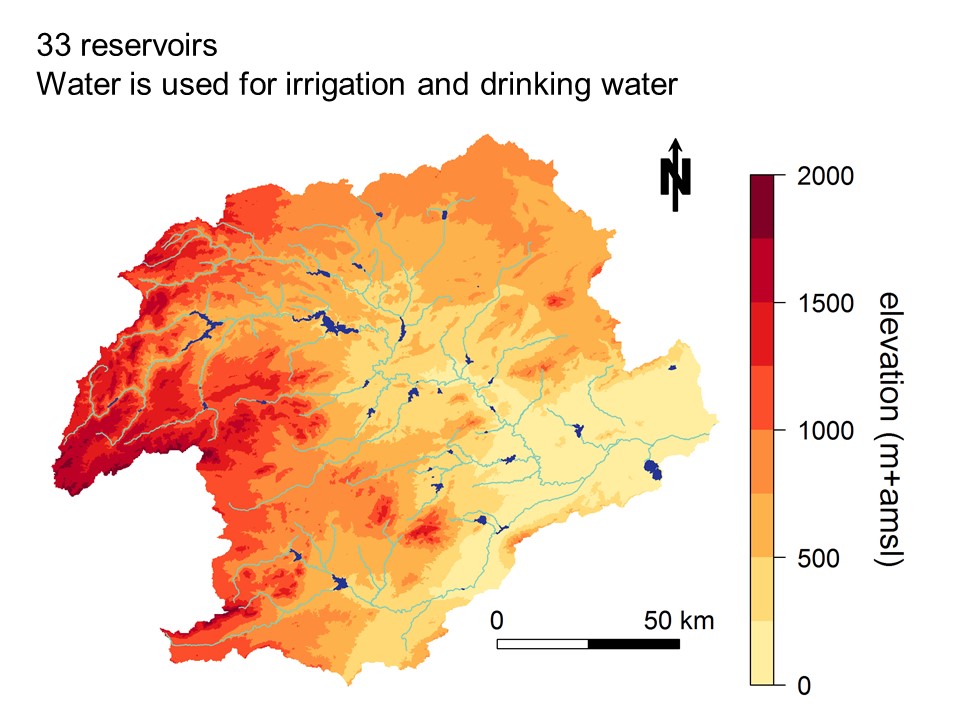
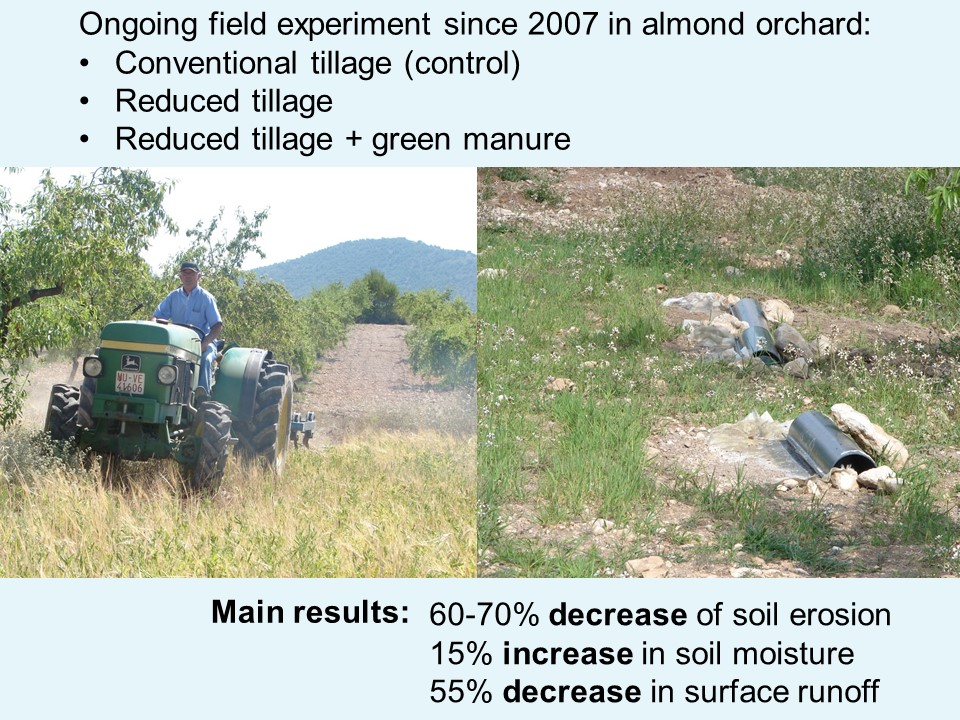
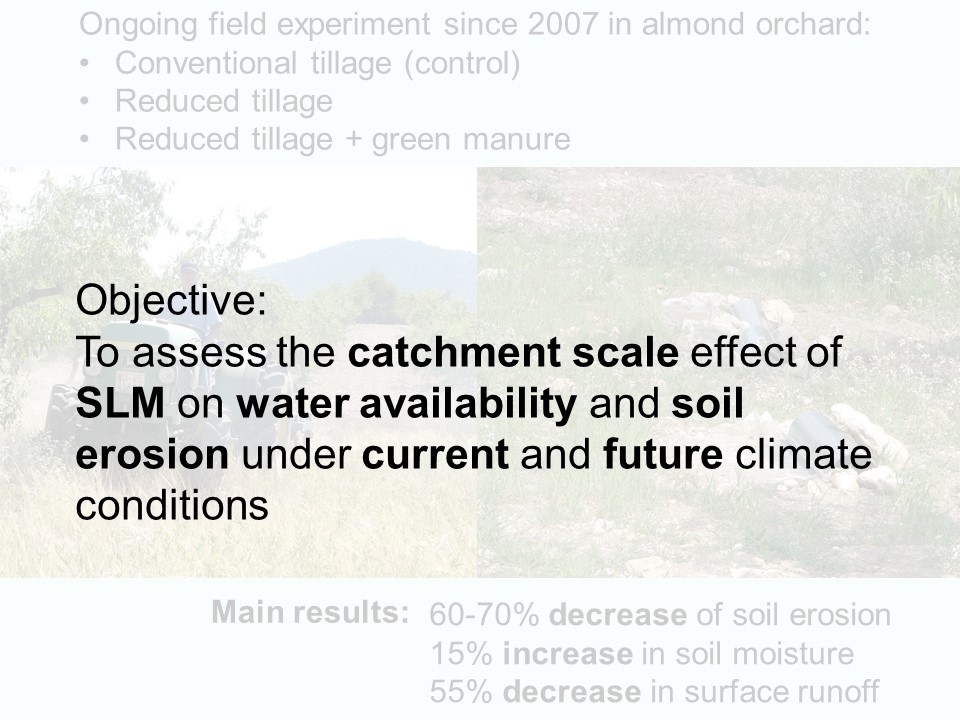
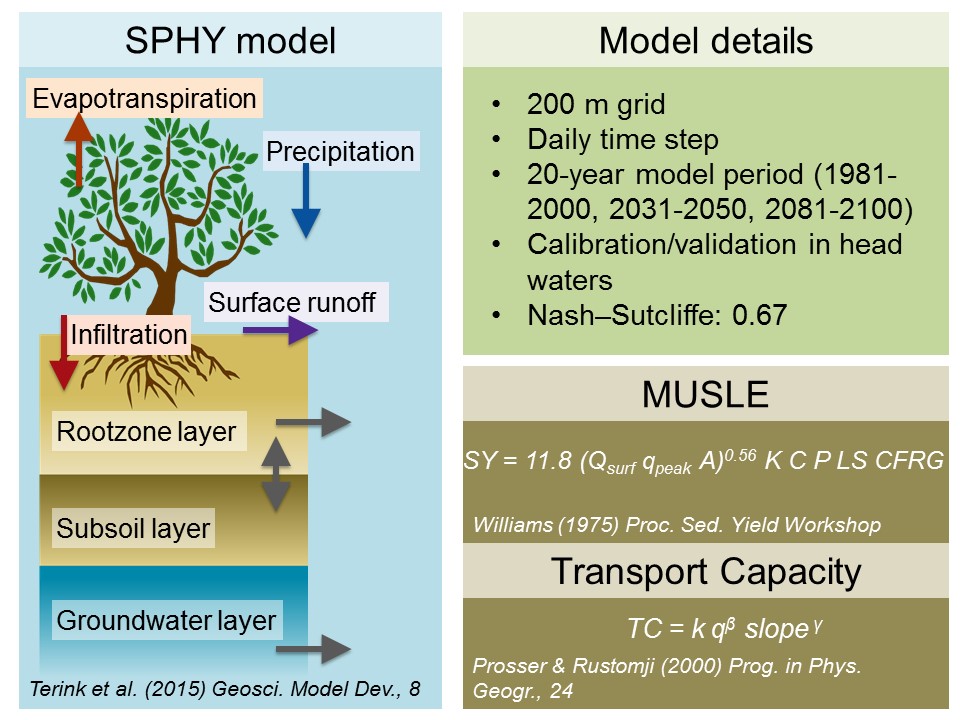












1/20
The impact of climate change and sustainable land management based adaptation on hydrology and soil erosion of a large semiarid catchment

2/20
Location of Segura River catchment
3/20
The segura catchment is a semi-arid catchment with an average yearly precipitation of 350 mm
4/20
Future climate scenarios show a strong impact in the catchment
5/20
The main land use type in the catchment is agriculture, which amounts to 51% of the surface area of the catchment
6/20
A total of 33 reservoirs are located in the catchment. Water in these reservoirs is used for irrigation and drinking water
7/20
Sustainable land management is a promising technique to increase soil moisture and decrease soil erosion and surface runoff and mitigate climate change effects
8/20
Our study aims to upscale the application of SLM to all orchards in the catchment and to asses the catchment scale effect of SLM on water availability and soil erosion under current and future climate conditions
9/20
We applied the SPHY model (Spatial Processes in Hydrology), which is a leaky bucket type of model, coupled the model with MUSLE equation and included a transport capacity formula in the channel cells
10/20
This presentation shows the results of one RCM and will focus on the processes that may occur under future climate conditions, which are shown in this diagram
11/20
Under future conditions a small increase of precipitation is observed, even though, soil moisture will decrease and crop stress will increase. This is for a large part the consequence of an increase in intense precipitation, which causes an increase of surface runoff
12/20
How will this affect soil erosion?
13/20
The increase in intense precipitation and surface runoff will cause an increase in soil erosion of 51% on plot scale and to 70% on catchment-scale
14/20
We implemented SLM measures to all orchard cells according to this table. We applied two types of SLM: reduced tillage and reduced tillage plus organic matter amendment
15/20
When reduced tillage is applied, surface runoff will decrease and soil moisture will increase. The decrease of surface runoff will cause a decrease of discharge, the opposite effect as we saw before under future climate conditions
16/20
The impact on soil erosion is as expected: a decrease in soil erosion
17/20
Similar to the results under current climate conditions, OM amendment increases the impact with an increase of soil moisture of 4% with respect to the reference run. This will cause a decrease of crop stress
18/20
On catchment-scale the impact of climate change seems to predominate, although a decrease of 7% specific sediment yield is achieved with respect to the future scenario without SLM
19/20
Conclusions
20/20
Thanks you for your attention